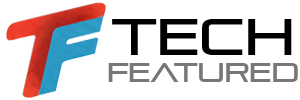Worrying whether or not you were overcharged for your car repair is an awful feeling. There’s tons of advice on how to avoid getting ripped-off, but few discuss the actual car repair prices. We really need to look at the charges on a car repair estimate or auto repair invoice to determine if we’re paying too much.
The focus needs to shift from giving outdated and ineffective advice to addressing the specific charges. Are they legitimate charges? Can they be justified by industry guidelines?
Now car repair estimates can be confusing. So let’s break it down to get a better idea if your auto repair shop is billing you appropriately.
First, a glossary of terms is in order, as the auto industry has a language of its own…
Aftermarket Parts: parts not made by or for the manufacturer.
MSRP: Manufacturer’s Suggested Retail Price
OEM: Original Equipment Manufacturer. Manufacturer approved parts designed specifically for your vehicle.
TSBs: Technical Service Bulletins. Notes and instructions provided by the manufacturer for known and specific concerns (they are not recalls).
Flat Fees: services such as alignments that don’t get broken down into parts, tax, labor
Miscellaneous Charges: these can include, but are not limited to shop supplies – rags, chemicals, hazardous waste disposal fees, waste oil …etc.
Labor Rate: a repair center’s hourly charge to service your vehicle
Labor Time: the amount of time or hours determined that it will take to fix your vehicle
Labor Description: the step-by-step written details of repairs and/or services
Ok, let’s look at the Anatomy of an Auto Repair Estimate:
There are six basic components to a car repair estimate
1) Customer/Vehicle Information
2) Parts
3) Labor
4) Miscellaneous Charges
5) Flat Fees
6) Summary of Charges
Customer and Vehicle Information
Using a generic “top down” style estimate, the top portion simply contains your personal information and your vehicle’s specifics: year, make, model, mileage…etc, as well as your request or concern.
We also want find the shop’s labor rate. The labor rate is critical in determining if you paid too much. Most repair centers don’t list the labor rate. We’ll discuss why shortly.
Auto Parts
Parts are listed usually with a brief description, as well as the quantity, and the price. There are three types of parts: OEM (parts made by or for a manufacturer). These are the parts installed by a dealer, although many local shops use OEM parts too.
Aftermarket parts are non OEM parts, and there are various degrees of quality, depending on the brand and where they’re made – China versus USA, for example.
Then there are Used parts purchased from a salvage yard.
To determine if you paid too much for parts, first find out what type of parts are being used. With OEM parts, you don’t want to pay more than MSRP, although most people do without realizing it. Premium aftermarket parts are similarly priced across brands, although beware not to pay more than MSRP, which again, many folks do. Used parts prices are all over the place, so pick the price in the middle.
Auto Repair Labor
Labor is billed in tenths. So 1.0 equals 1 hour. 1.5 equals an hour and a half.
Labor rates range from $60 to $100 per hour at local repair shops and $80 to $140 per hour at the dealer level. Labor times are based off established industry guidelines, which are frequently abused.
If you don’t see the shop’s labor rate posted on the car repair invoice, ask your service center for the rate. Repair shops can manipulate the labor rate (among other things) with a labor matrix. Matrix pricing is a complicated and ethically questionable practice discussed at length in RepairTrust literature. What you need to know is that you can pay as high as $150 per hour rather than the posted labor rate of $105 per hour.
Thus, you’ll want to multiply the number of hours billed (which is also often not posted) by the shop’s labor rate to determine if you’ve been charged accordingly.
Most labor descriptions are poorly written and difficult to understand. So ask questions.
Here’s a “clear” labor description for a 30,000 mile service on a Toyota Camry.
Performed 30,000 mile service per customer request, and in accordance with manufacturer guidelines. Changed oil and filter, installed new air filter, cabin filter and performed all necessary tests, checks, and procedures, including road test (miles 30,123 – 30,125). Performed lubrication services and confirmed proper vehicle operation. Set tire pressures, and checked fluids, belts and hoses. Note: vehicle is pulling slightly left. Needs alignment
Miscellaneous Charges
The bulk of your car repair invoice will be parts and labor, but we can’t forget about Miscellaneous Charges. These charges can include, but are not limited to, shop supplies – rags, chemicals, hazardous waste, disposal fees, waste oil …etc. The latter of these may be billed out separately in a summary at the bottom of your repair invoice.
Very few of these “extras” are actually used during regular repairs. Miscellaneous charges are calculated off the amount of labor hours billed, not the amount of miscellaneous items used.
Flat Fees
Flat fees can be another very tricky area. Flat fees are services, such as an alignment, which don’t get broken down into parts, tax and labor. This makes it difficult to determine the real and fair price. On the plus side, most flat fees are competitively priced.
Be warned however, another term for Flat Fee is called Menu Selling. In other words, you might see Tune Up: $99.99 or Transmission Flush: $89.99. Follow your manufacturer’s recommendations only, not a dealer’s or repair shop’s menu.
For an interesting read on this topic, click
car maintenance costs
Summary of Charges
The last part of an auto repair estimate is the summary of charges. It’s usually found in the bottom right hand corner of the invoice. Check it against the charges above to ensure that it all adds up mathematically, as well as logically.
This basic estimate outline may differ from your particular invoice, which may have other categories such as “Sublet” or “HazMat.”
A sublet charge is added when your auto repair shop uses another vender to fix or repair your car, such as a glass company that replaces your windshield.
A HazMat charge may include waste oil or other disposal fees. Just make sure that the charges are warranted, as again, they too are often calculated off the labor time rather than actual need.
In sum, understanding the “actual” charges, asking the right questions, and breaking down your auto repair costs is the best way to avoid paying excessive car repair prices.











